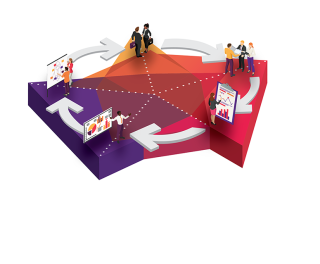
Building a human-centred trust framework for emerging technology adoption

What is trust in technology?
Modern society’s adoption and reliance on technology in everyday life demonstrates widespread growth in digital trust. Every day, millions of motorists globally use Google Maps to get around in a safe and timely manner. Our homes now listen for us to say “Alexa”, “Hey Siri” or “Hey Google”. Even our appliances tell us what they need to perform their tasks. We are learning to trust technology more and more and it has happened gradually, without many of us noticing.
The need for trust in technology
According to a 2019 survey of CEOs, Executives and Directors by Harvard Business School, 70% of digital transformation initiatives did not meet their business goals. Participants pointed to significant challenges in gaining the required level of acceptance and confidence in the initiatives.
The modern ICT landscape is complex. Operational dependencies, technology multiplicity and the complexity of control and governance, create barriers for the adoption of new technologies. A multi-speed IT journey is crucial to ensuring expected benefits realisation, sustainable growth, and customer and employee experience improvement. Decision-makers face a balancing act to keep, maintain, scale, and retire existing technologies whilst concurrently adopting new technologies, to de-risk and mitigate potential disruptions. They must build confidence in stakeholders by seeking their participation and commitment and supporting them throughout the process.
Myth: Trust is a "side-effect of progress"
Cryptocurrency was progressive and futuristic, receiving significant investment, hype, and recognition from mainstream investors over the past five years. Though these digital assets are risky and largely unregulated, they have generated buy-in and are now trading at scale.
The collapse of LUNA stablecoin in May 2022 reminded cryptocurrency investors that trust in technology is the foundation of their high-risk portfolio. The loss of nearly $20 billion USD within 24 hours resulted from a rapid loss of confidence in LUNA’s algorithm which promised to prevent fluctuation in ‘stablecoin’ value. This loss in confidence was followed by a bank run on the coin's protocol. Just a few short weeks ago, the LUNA coin was at an all-time high of US$119 before it collapsed and at the time of writing was at US$0.90 – a greater than 99% loss in value.
This demonstrates that we must consider building trust in the form of sustainability and resilience for lasting and impactful progress.
Myth: Technology adoption comes first, then trust will follow
The saying ‘seeing is believing’ has been embedded deeply into the technology adoption playbook.
When new technology is implemented without appropriate end user engagement through the selection and development of the product and with limited or poor change management, end users are wary and uncertain of how the technology will impact them, and whether they will need to manually fill any shortfalls. Generally, over time post implementation trust will grow as users settle into their new approach and work with the new technology however this will take much longer in not delivered effectively.
Leveraging agile approaches with dedicated product owners from within the end user cohort and improving change management practices look to build trust earlier and increase the likelihood of adoption by the end user. The technology does not need to be implemented for end users to trust what may happen, and closer engagement throughout the project seeks to build trust before adoption.
Building a human-centred trust framework creates opportunities
An upfront trust framework acknowledges that each organisation is different and must consider a combination of business context, history, legacy, process, and people. When creating a framework to increase trust in digital initiatives, organisations may consider the following foundational pillars:
1. Transparency to enable inclusiveness, empowerment, and exciting people to move towards a common purpose. The two core elements of transparency are openness in information and data sharing and acting on constructive feedback.
2. Value co-creation to ignite conversations and collaboration on developing value chains, value drivers and inter-dependencies to assist in driving impact across the organisation with the adoption of technology. The three key aspects of value co-creation are LEAN operations (measurement and quality improvement), end-to-end process definition and modelling and iterative (agile) delivery.
3. Leading by example rather than solely depending on a top-down approach. Developing ‘train the trainer’ programs and building knowledge repositories will assist the organisation in empowering teams and individuals to acquire and share knowledge through improvements and hands-on experience actively, driving a cultural shift.
The three pillars above align and promote the importance of behaviour, attitude, environment and experience, together driving an increase in trust, despite the challenges from change.
Consider trust as a tool in your toolbox next time you are involved in an important digital transformation and how you can build trust and technology at the same time.

